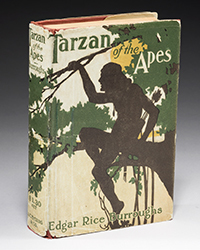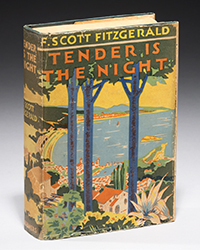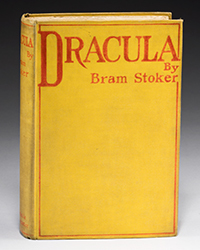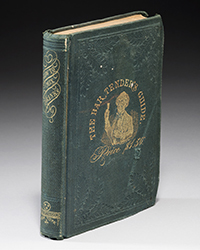In the Bay Area recently for the ABAA’s west coast show I met with Rupert Powell, Vice Chairman of Forum Auctions, and suggested he tell us his story, that is, his career in the book auction field and his sense of what the future holds for rare books, manuscripts, maps and ephemera. What now follows is that story followed by his impression about what’s ahead. It of course helps that he is bright and entertaining. Here goes.
An auctioneer’s lot
Rupert Powell, Deputy Chairman and Head of Books, Forum Auctions, London
It was John Maggs (kind and very eccentric) who really gave me my first entrée into the rare book auction world. I graduated with a degree in French and German in the summer of 1985 and wrote to both Maggs and Quaritch asking for help/employment. Quaritch did not reply but John Maggs gave up an afternoon for a chat in his office in Berkeley Square and, whilst he could not offer me a position, suggested I wrote to a fledgling company who had recently opened for business in new premises, Bloomsbury Book Auctions. My letter to BBA arrived at the same time as they were offered a consignment of 18th century French astronomical manuscripts and, noticing my supposed language skills, they asked me up to London for an interview. After meeting Frank Herrmann and Lord John Kerr for no more than 30 minutes I returned to my home in Dorset with the entire consignment of manuscripts to work on over the next few weeks; their trust in me was remarkable (how did the insurance cover work, I now wonder?) but I must have done a reasonable job of cataloguing the collection because I was offered the position of junior cataloguer and started work a month later, remaining employed by them for the next 31 years. The astronomical manuscripts were due to appear at auction in November so a month before the sale we sent a copy of the catalogue to the French Royal Observatory in Paris, believing they should/would be interested in bidding. Almost by return they informed us that the collection had been stolen and that we should stop the sale; lawyers’ letters were exchanged and on the morning of the sale we received a fax (remember those?) from Interpol demanding that we withdraw every lot. It then took 10 years for the Observatory to drop their claim and to agree that the consignor had good title – with a hint of irony, it was Quaritch who eventually helped us negotiate the sale of the bulk of the collection for somewhere in the region of £100,000.
Bloomsbury was a truly wonderful place for me to learn, hands on, every aspect of auctioneering. I took my first auction – by candlelight because of a power-cut – in 1988 with no formal training, but having closely observed how Lord John and David Stagg brilliantly conducted sales. I was at one time or another: porter, cataloguer, administrator, press officer, marketing and database manager, business-getter, and accountant. In the middle of a six-month “sabbatical” quenching my wanderlust travelling alone through Australia, New Zealand, USA and Canada in 1990; I was contacted by Frank Herrmann (I was in a bar celebrating with tequila shots after bungee jumping in Queenstown, NZ) offering me an associate-directorship. I became MD in 1996; helped negotiate the deal to sell the company to Bernard Shapero’s Stocklight Ltd in 2000; moved the business in 2004 to newly-refurbished offices in the heart of Mayfair; increased turnover from c.£2m in 2000 to c.£20m in 2008. After the global economic meltdown of 2008 and suffering our own financial squeeze, Bloomsbury joined forces with Dreweatt’s, at the time the UK’s largest regional fine art auction house. Under the driving stewardship of Stephan Ludwig (ex-Credit Suisse) we recovered to become not only very profitable but also an attractive company to be acquired by Noble Investments (owners of Baldwin’s, the coins and medals specialists); and then in 2013 Noble was duly bought by the Stanley Gibbons group. Bloomsbury/Dreweatt’s (“Interiors” division) remained a well-respected and profitable business with experienced and motivated, happy staff, delivering over £1m profit for 3 years in a row. Unfortunately Stephan Ludwig reached an irresolvable impasse with Stanley Gibbons on maintaining management and financial autonomy of the Interiors division and he left in August 2015. The following March, after several profit warnings to the City and with the Stanley Gibbons’ share price having fallen off a cliff, as Deputy Chairman I decided to leave the company I had helped build and nurture through thick and thin. Tough decision.
After over 3 months of gardening leave, adhering to strict non-compete and non-solicitation terms, I was asked by Stephan to join his new start-up company, Forum Auctions. I leapt at the chance; not only to work with Stephan (who has the sharpest business brains I have ever met) again, but also, to my delight, to be reunited with over a dozen ex-Bloomsbury colleagues who had likewise left and, through recruitment agents, been persuaded to join Forum. I started work again on 1 July, less than 2 weeks before our inaugural sale. That sale, put together in 3 months, grossed over £1.1m ($1.4m); in over 30 years at Bloomsbury we only ever had two sales that totaled more. The momentum behind Forum continued and after 6 months we had hammered in excess of £3.5m, achieved a “white-glove” sale (where every lot sells and, according to a 19th century tradition, the auctioneer is presented with a pair of white gloves), a number of world records, and opened a jewelry and watches department.
Forum’s business model is simple: we recognize the extraordinary technological advances over the last decade or so and how that has impacted on the auction world, particularly with regard to online bidding; but simultaneously we fully appreciate the importance of “traditional” auctions and how an older generation of collectors and dealers still enjoy the “theatre” of a live-action auction event. By fusing the two, Forum aims to appeal to both types of clientele; this is further enhanced by our willingness to continue to offer the entire range of printed and graphic material (both in terms of subject matter and value); by our adherence to high levels of cataloguing skills and bibliographic accuracy, as well as high quality photography and catalogue production; by our excellent client-services (recognizing that the customer is, we hope, there for a long-term relationship, not just a one-off transaction); and finally, from which all the above flow more easily, by employing staff who are knowledgeable (but always learning), passionate, vastly experienced but greatly enthused by what they do and, above all, happy with their colleagues and environment. As a final incentive to deliver the optimum for the company, every member of staff owns a stake and thus has a vested financial interest in all we do. Stephan has taken the core staff and values of old Bloomsbury and created a new, vibrant and financially sound 21st century auction house specializing in Books and Works on Paper…
…And this is surely where the rare book world is heading. Online pricing transparency has dealt a body blow to the retail sector. There is also an entire generation of consumers who have been brought up with eBay – showcasing the ease and “fairness” of the auction process. With all auction houses now able to readily offer their consignments to private end-users, and with those end-users now familiar and at ease with transacting by auction (a method which only 30 years ago still had a certain mystique and fear surrounding it), why would buyers pay a full retail price for something? Those traditionally distinctive lines between a dealer and an auctioneer are becoming ever more synthetic – there are now many examples of dealers operating an auction arm and, vice-versa, auctioneers selling by alternative methods such as private treaty. The future for auction houses looks comparatively positive, whereas dealers must surely be wondering how to maintain their capital-intensive stock-based selling model. Forum’s slick, clean and user-friendly online bidding site; their reach into the private and institutional sectors; and their ability to offer clients easy and non-onerous financing terms (n.b. their tie-up with peer-to-peer lender Unbolted) put them well on the way to creating a truly “one-stop shop” for buying and selling rare books and works on paper.


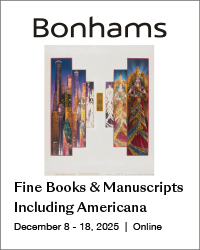

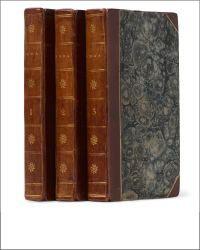
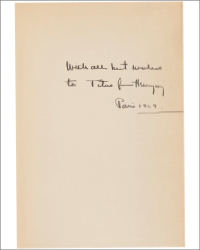
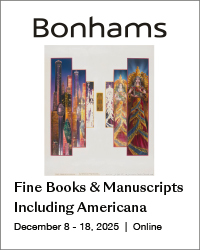
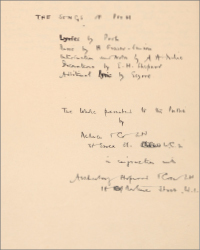

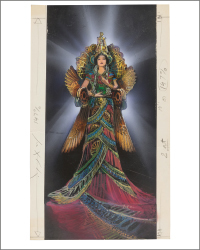
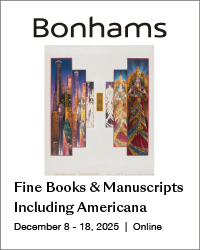
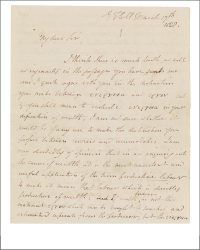
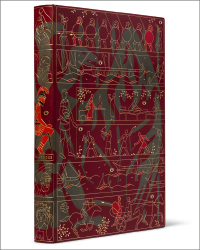
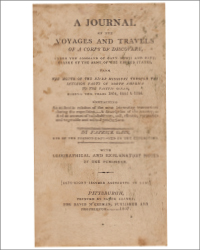
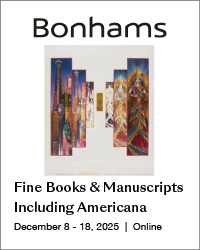
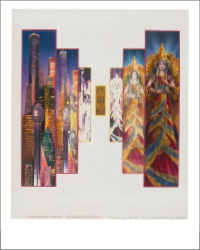
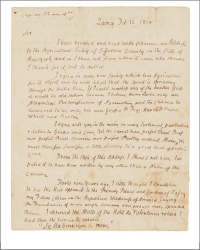

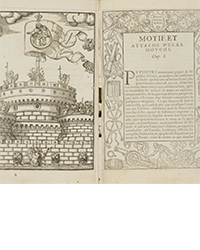
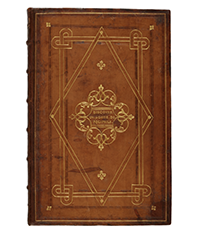
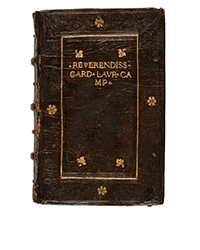
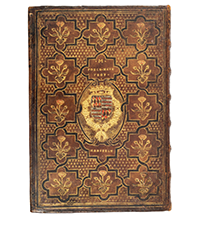
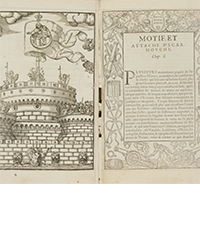
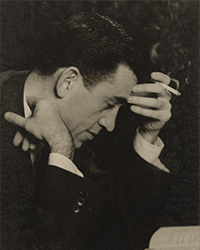
![<b>Sotheby’s, Dec. 16:</b> [Austen, Jane]. A handsome first edition of <i>Sense and Sensibility,</i> the author's first novel. $60,000 to $80,000. <b>Sotheby’s, Dec. 16:</b> [Austen, Jane]. A handsome first edition of <i>Sense and Sensibility,</i> the author's first novel. $60,000 to $80,000.](https://ae-files.s3.amazonaws.com/AdvertisementPhotos/9a74d9ff-42dd-46a1-8bb2-b636c4cec796.png)
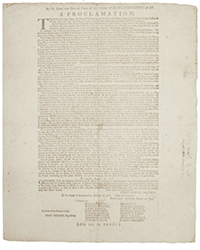
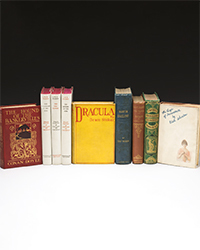
![<b>Heritage, Dec. 15:</b> John Donne. <i>Poems, By J. D. With Elegies on the Author's Death.</i> London: M[iles]. F[lesher]. for John Marriot, 1633. <b>Heritage, Dec. 15:</b> John Donne. <i>Poems, By J. D. With Elegies on the Author's Death.</i> London: M[iles]. F[lesher]. for John Marriot, 1633.](https://ae-files.s3.amazonaws.com/AdvertisementPhotos/8caddaea-4c1f-47a7-9455-62f53af36e3f.jpg)
